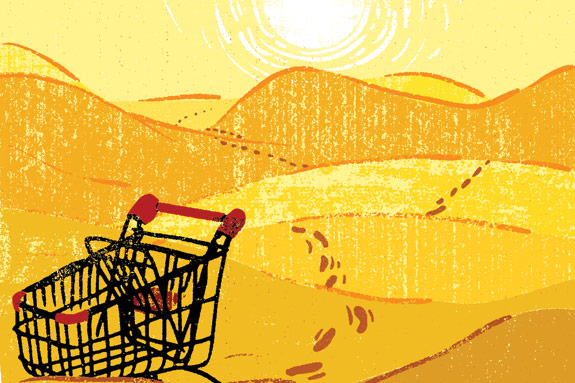The routine drive to the nearest supermarket, getting up from the couch to grab a fresh apple from the fridge, and the ability to obtain fresh produce in a matter of minutes. These may seem like merely mundane tasks, but that’s not always the case for the many impoverished communities dotted across the U.S.
With food and hunger crisis being covered by news outlets on a global scale, it’s easy to miss one of the most prevalent hunger-related issues in urban communities, food deserts.
Food deserts occur in either urban or rural communities when people have limited access to supermarkets, supercenters, grocery stores, or other sources of healthy food and produce. The U.S. Department of Agriculture (USDA) says that 17.4% of the U.S. Population has low access to healthy foods. That’s about 53.6 million people that live in low-income and low-access!
Some of the only sources of food that people have are either fast-food restaurants or convenience stores nearby that don’t always have access to fresh fruits and veggies. Processed foods are cheaper and more affordable in America leaving impoverished communities with little and often unhealthy options for sustenance.
Urban communities like Detroit have been dealing with food deserts as an issue for a while and are still currently dealing with them. There are 19 neighborhoods in Detroit considered food deserts by the Michigan Department of Agriculture. This leaves many people to settle for the nearest McDonald’s or Burger King.
Poor diets and heavy consumption of sugar, sodium, and unhealthy fats are the byproducts of consistent eating of cheap, processed fast food. According to a 2018 Detroit metrics report, 37% of Detroit adults are obese and 14% have been diagnosed with diabetes.
When it comes to rural communities, the availability of large food retailers- Walmart, Costco, Whole Foods, ShopRite, Weiss, Kroger, etc.- is quite minimal. Transportation challenges and financial constraints can also contribute to limited access to more nutritious foods, another name for this is food insecurity.
A lot of this information may seem very negative, but we can create a more positive outcome for these impoverished areas if we come together. Urban gardens started by other nonprofits (and even just community members) are already popping up in Detroit and other cities where food deserts are a major issue. If we assist organizations such as F4 in solving food insecurity we can help those that are suffering achieve a much brighter and healthier future.
Sources
https://www.ers.usda.gov/data-products/food-access-research-atlas/documentation/
https://www.thesouthend.wayne.edu/features/article_ea5c3c08-46fd-11e8-b44a-bb0dd1413b54.html
https://www.ruralhealthinfo.org/topics/food-and-hunger
https://www.medicalnewstoday.com/articles/what-are-food-deserts#health-impact


Leave a Reply